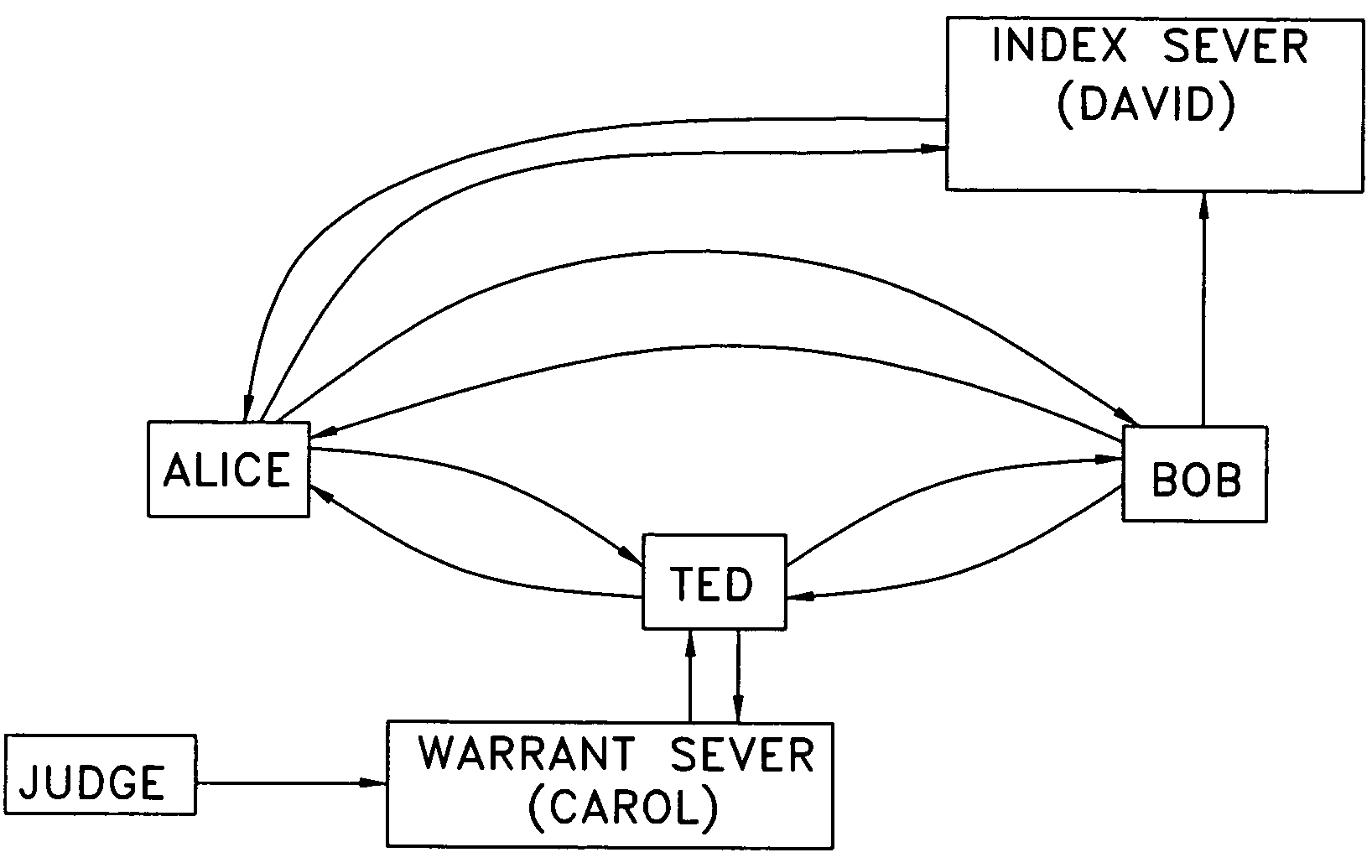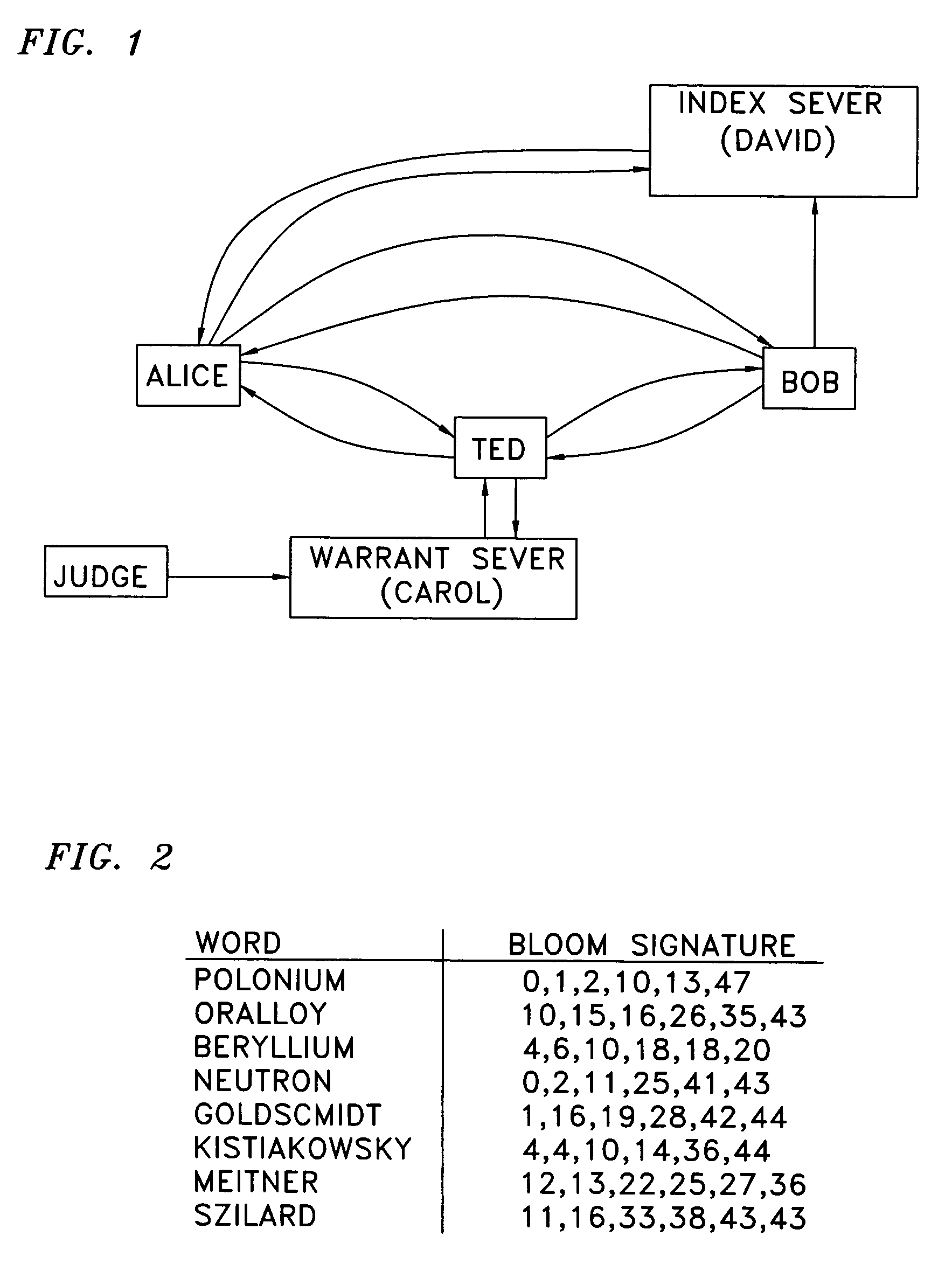Privacy-enhanced searches using encryption
a technology of encryption and privacy, applied in the field of database queries, can solve the problems of not being able to meet the goal of keeping the nature, and conventional search techniques do not permi
- Summary
- Abstract
- Description
- Claims
- Application Information
AI Technical Summary
Benefits of technology
Problems solved by technology
Method used
Image
Examples
Embodiment Construction
[0010]FIG. 1 shows an arrangement where Bob is a database publisher. Although Bob is willing to entertain queries of his database, he is not willing to expose the database itself and, therefore, Bob encrypts the index to his database (by the use of hash or encryption functions). Alice may wish to query Bob's index but she does not have a key to decrypt Bob's index, nor does she have the key by which Bob's index was encrypted. Alice could send the query to Bob in plaintext, and Bob can encrypt the query and thus search his encrypted index, but Alice does not want Bob to know what she is searching for. To solve this problem a party that is trusted by both parties, Ted, can be engaged, with Alice encrypting her query with one key, sending the encrypted query to Ted, Ted decrypts Alice's query, re-encrypts it with Bob's key and forwards the query to Bob. Bob executes the query, and returns the answer to Alice (either directly or through Ted).
[0011]The issue with this approach is that Te...
PUM
 Login to View More
Login to View More Abstract
Description
Claims
Application Information
 Login to View More
Login to View More - R&D
- Intellectual Property
- Life Sciences
- Materials
- Tech Scout
- Unparalleled Data Quality
- Higher Quality Content
- 60% Fewer Hallucinations
Browse by: Latest US Patents, China's latest patents, Technical Efficacy Thesaurus, Application Domain, Technology Topic, Popular Technical Reports.
© 2025 PatSnap. All rights reserved.Legal|Privacy policy|Modern Slavery Act Transparency Statement|Sitemap|About US| Contact US: help@patsnap.com



